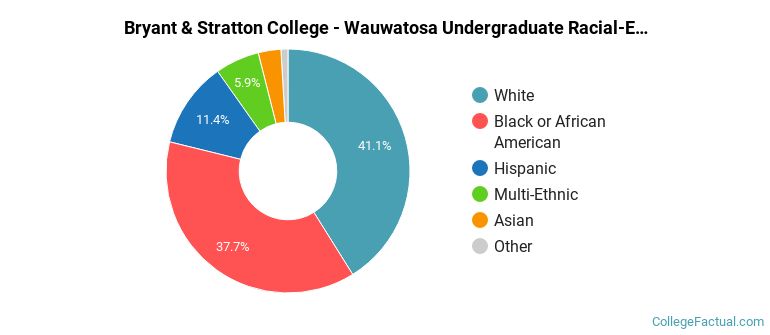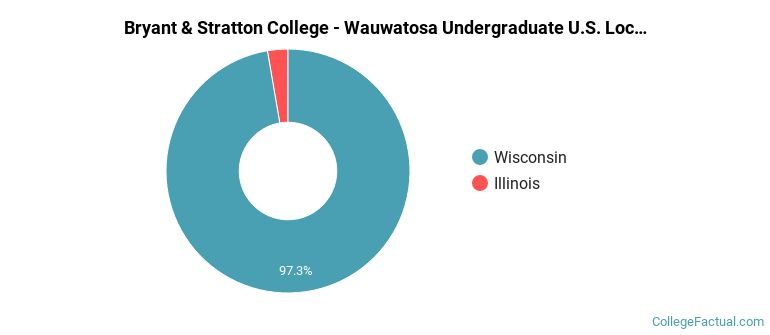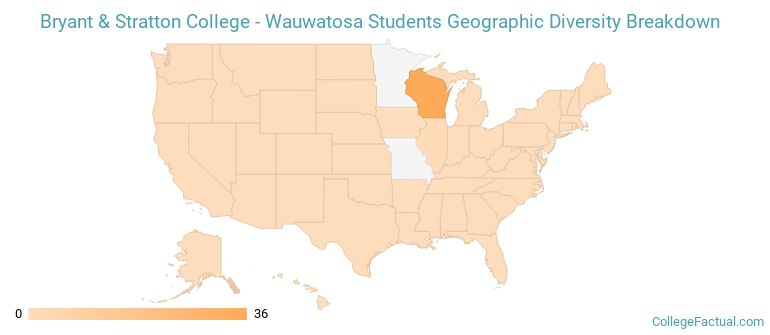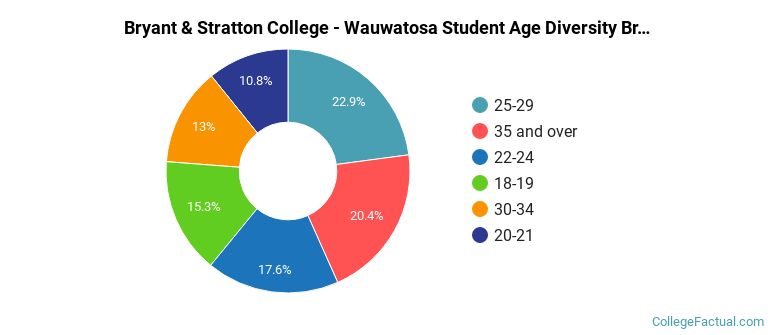 by our College Data Analytics Team
by our College Data Analytics TeamBryant & Stratton College - Wauwatosa total enrollment is approximately 1,453 students.
Male/Female Breakdown of Undergraduates
The full-time Bryant & Stratton College - Wauwatosa undergraduate population is made up of 75% women, and 25% men.

For the gender breakdown for all students, go here.
Bryant & Stratton College - Wauwatosa Racial/Ethnic Breakdown of Undergraduates

| Race/Ethnicity | Number |
|---|---|
| White | 349 |
| Black or African American | 290 |
| Hispanic | 118 |
| Multi-Ethnic | 65 |
| Asian | 29 |
| Unknown | 4 |
| Native Hawaiian or Pacific Islander | 1 |
| International | 0 |
See racial/ethnic breakdown for all students.

| Race/Ethnicity | Number |
|---|---|
| White | 571 |
| Black or African American | 518 |
| Hispanic | 188 |
| Multi-Ethnic | 100 |
| Asian | 46 |
| Unknown | 10 |
| Native Hawaiian or Pacific Islander | 2 |
| International | 0 |

There are approximately 1,196 female students and 257 male students at Bryant & Stratton College - Wauwatosa.
Bryant & Stratton College - Wauwatosa ranks 1,884 out of 2,183 when it comes to geographic diversity.
2.7% of Bryant & Stratton College - Wauwatosa students come from out of state, and 0% come from out of the country.

The undergraduate student body is split among 2 states (may include Washington D.C.). Click on the map for more detail.

| State | Amount |
|---|---|
| Wisconsin | 36 |
| Illinois | 1 |
| Alaska | 0 |
| Alabama | 0 |
| Arkansas | 0 |
A traditional college student is defined as being between the ages of 18-21. At Bryant & Stratton College - Wauwatosa, 25.99% of students fall into that category, compared to the national average of 60%.

| Student Age Group | Amount |
|---|---|
| 25-29 | 178 |
| 35 and over | 159 |
| 22-24 | 137 |
| 18-19 | 119 |
| 30-34 | 101 |
| 20-21 | 84 |
| Under 18 | 0 |
Footnotes
*The racial-ethnic minorities count is calculated by taking the total number of students and subtracting white students, international students, and students whose race/ethnicity was unknown. This number is then divided by the total number of students at the school to obtain the racial-ethnic minorities percentage.
References
Department of Homeland Security Citizenship and Immigration Services
Learn more about how College Factual creates their Diversity Rankings.